Clade Scutocoxifera Higher classification Isopods | Subphylum Crustacea Scientific name Oniscidea Rank Suborder | |
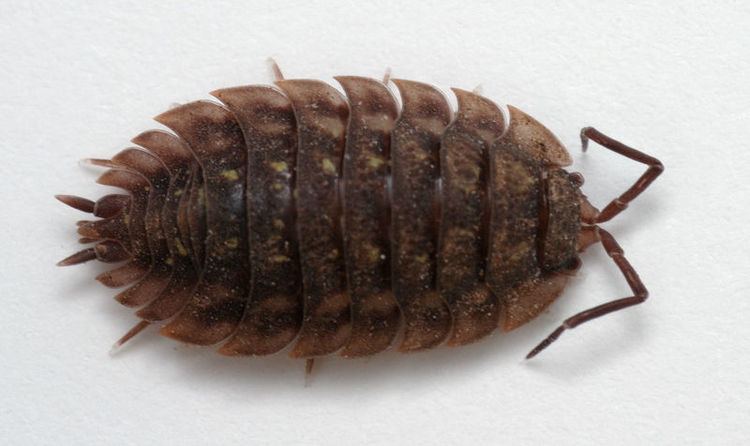 | ||
Lower classifications Pill bugs, Oniscus, Philosciidae, Armadillo | ||
A woodlouse (plural woodlice) is an isopod crustacean with a rigid, segmented, long exoskeleton and fourteen jointed limbs. Mostly they feed on dead plant material, and they are usually active at night. Woodlice form the suborder Oniscidea within the order Isopoda, with over 5,000 known species.
Contents
- Common names
- Description and life cycle
- Pillbugs and pill millipedes
- Ecology
- Woodlice as pests
- British Isles
- References
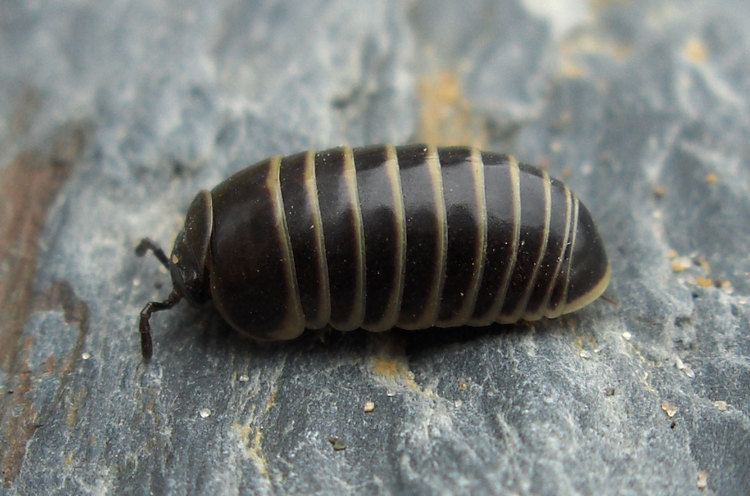
Woodlice in the genus Armadillidium and in the family Armadillidae can roll up into an almost perfect sphere as a defensive mechanism, hence some of the common names such as pill bug or roly-poly. Most woodlice, however, cannot do this.
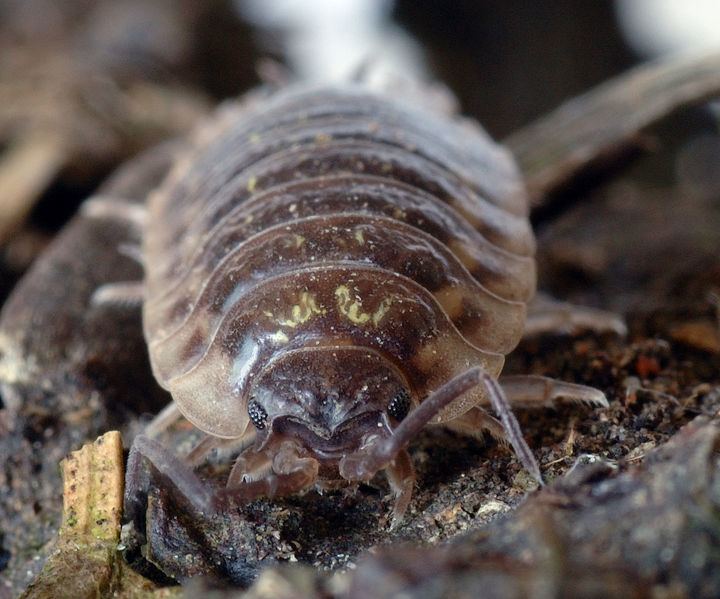
Common names
Common names for woodlice vary throughout the English-speaking world. A number of common names make reference to the fact that some species of woodlice can roll up into a ball. Other names compare the woodlouse to a pig.
Names include:

Description and life cycle
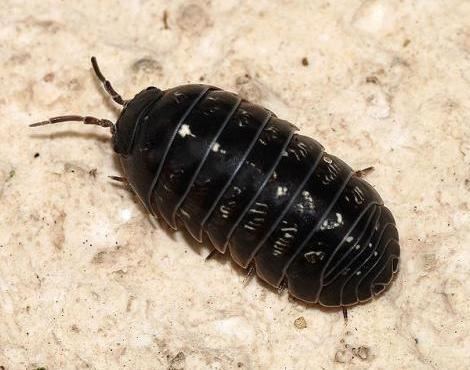
The woodlouse has a shell-like exoskeleton, which it must progressively shed as it grows. The moult takes place in two stages; the back half is lost first, followed two or three days later by the front. This method of moulting is different from that of most arthropods, which shed their cuticle in a single process.
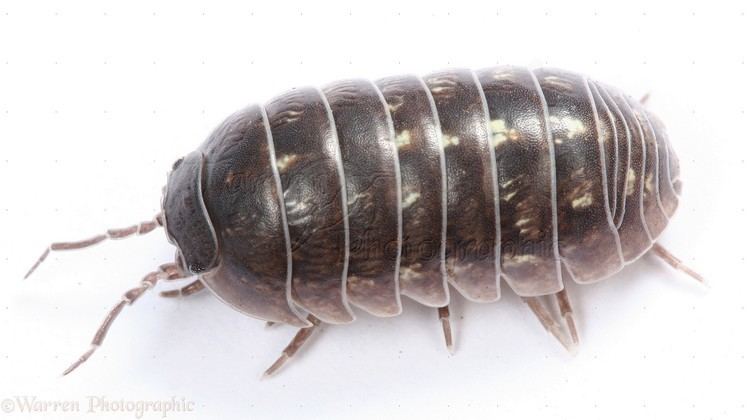
A female woodlouse will keep fertilised eggs in a marsupium on the underside of her body until they hatch into offspring that look like small white woodlice curled up in balls. The mother then appears to "give birth" to her offspring. Females are also capable of reproducing asexually.
Despite being crustaceans like lobsters or crabs, woodlice are said to have an unpleasant taste similar to "strong urine".
Pillbugs and pill millipedes
Pillbugs (woodlice of the family Armadillidiidae, also known as pill woodlice) can be confused with pill millipedes of the order Glomerida. Both of these groups of terrestrial segmented arthropods are about the same size. They live in very similar habitats, and they can both roll up into a ball. Pill millipedes and pillbugs appear superficially similar to the naked eye. This is an example of convergent evolution.
Pill millipedes can be distinguished from woodlice on the basis of having two pairs of legs per body segment instead of one pair like all isopods. Pill millipedes have twelve to thirteen body segments, with a large shield-like posterior segment, whereas woodlice have eleven, and small posterior segments. In addition, pill millipedes are smoother, and resemble normal millipedes in overall colouring and the shape of the segments.
Ecology
Living in a terrestrial environment, woodlice breathe through trachea-like lungs in their paddle-shaped hind legs (pleopods), called pleopodal lungs. Woodlice need moisture because they rapidly lose water by excretion and through their cuticle, and so are usually found in damp, dark places, such as under rocks and logs, although one species, Hemilepistus reaumuri, inhabits "the driest habitat conquered by any species of crustacean". They are usually nocturnal and are detritivores, feeding mostly on dead plant matter.
A few woodlice have returned to water. Evolutionary ancient species are amphibious, such as the marine-intertidal sea slater (Ligia oceanica), which belongs to family Ligiidae.
Other examples include some Haloniscus species from Australia (family Scyphacidae), and in the northern hemisphere several species of Trichoniscidae and Thailandoniscus annae (family Styloniscidae). Species for which aquatic life is assumed include Typhlotricholigoides aquaticus (Mexico) and Cantabroniscus primitivus (Spain).
Woodlice are eaten by a wide range of insectivores, and some animals are known to prey exclusively on woodlice, for example, spiders of the genus Dysdera, such as the woodlouse spider Dysdera crocata, and land planarians of the genus Luteostriata, such as Luteostriata abundans.
Woodlice as pests
Although woodlice, like earthworms, are generally considered beneficial in gardens for their role in controlling pests, producing compost and overturning the soil, they have also been known to feed on cultivated plants, such as ripening strawberries and tender seedlings.
Woodlice can also invade homes en masse in search of moisture and their presence can indicate dampness problems. They are not generally regarded as a serious household pest as they do not spread disease and do not damage sound wood or structures.
British Isles
There are over 45 native or naturalised species of woodlouse in the British Isles, ranging in colour and in size (3–30 millimetres or 0.1–1.2 inches). Of these 45 species, only five are common: Oniscus asellus (the common shiny woodlouse), Porcellio scaber (the common rough woodlouse), Philoscia muscorum (the common striped woodlouse), Trichoniscus pusillus (the common pygmy woodlouse), and Armadillidium vulgare (the common pill bug).
